

The Video game popularity Data project analyses historical video game sales to provide GameCo with insights for strategic decision-making
GameCo’s Executives assumed that sales for the various geographic regions have stayed the same over time. GameCo Needs to understand which types of video games are most popular, identify main competitors, and analyze sales trends across different regions to make informed decisions on game development and marketing strategies.
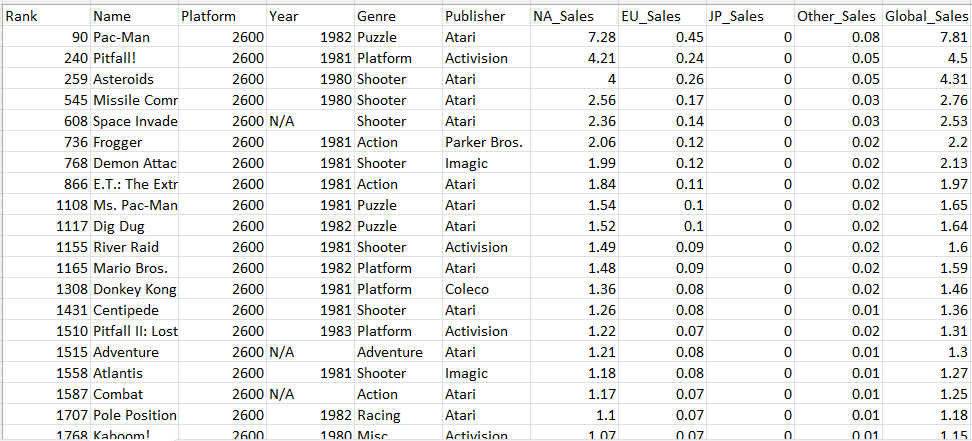
I used data cleaning techniques to clean a ‘dirty’ version of the video game sales data. There are several blanks in the columns. I removed the rows containing data without Vital information like Name, Year, Publisher, and platform. Rows containing only value data do not meet the criteria for substantial analysis. I removed duplicates and handled missing values by correcting inaccuracies.
To analyze whether sales for the geographic regions (North America, Europe, Japan, and other regions) have stayed the same over time from 1980 to 2016, a time series analysis on the sales data (as-it-is) should first be performed. This time series analysis should act as a first-stage statistical method to use to examine patterns and trends in data over time.
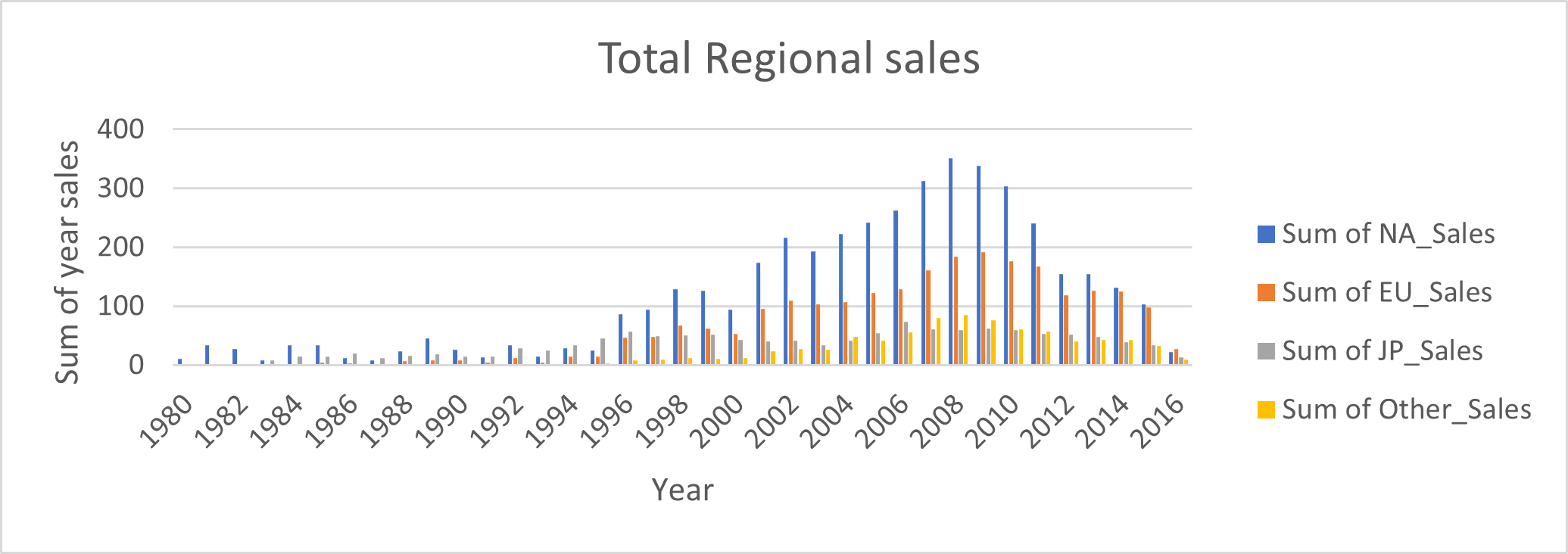
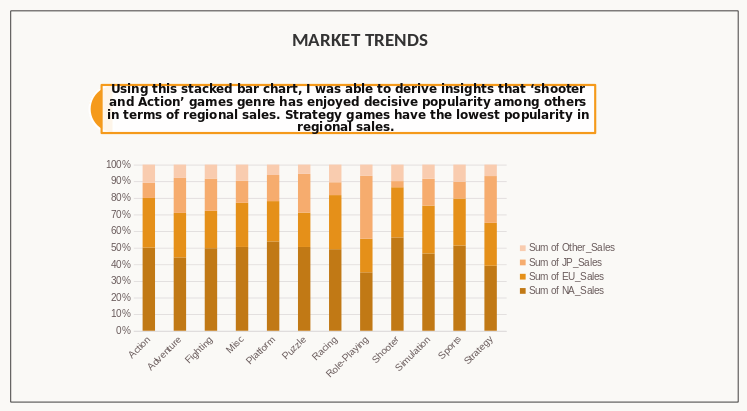
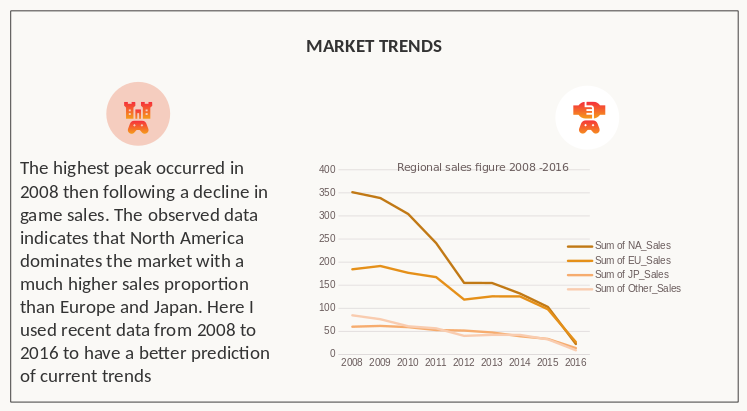
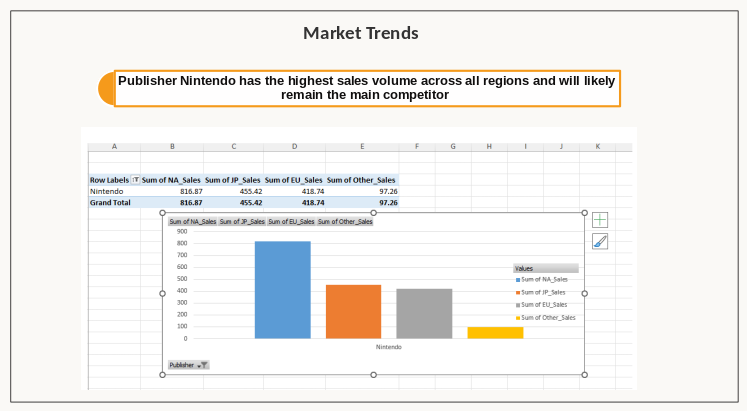
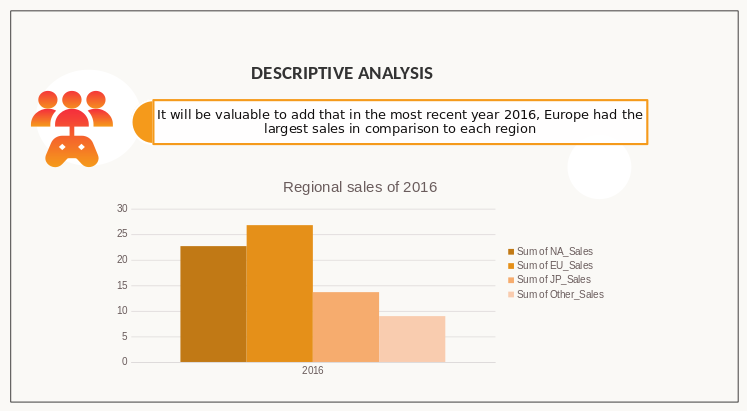
Prioritize developing and marketing Shooter and Action games to capture a significant share of the popular genres. Consider creating Sports and Platform games to appeal to a broad audience in North America and Europe.
In North America, focus on maintaining dominance in Shooter and Action genres. Invest in innovative marketing strategies to counteract the declining trend. In Europe, tailor marketing campaigns to highlight popular genres like Shooter, Action, and Sports games.In Japan, develop and market Role-Playing games to cater to local preferences. Collaborate with local influencers to boost market presence.
Analyze strategies of top competitors like Nintendo, EA, and Activision Blizzard.